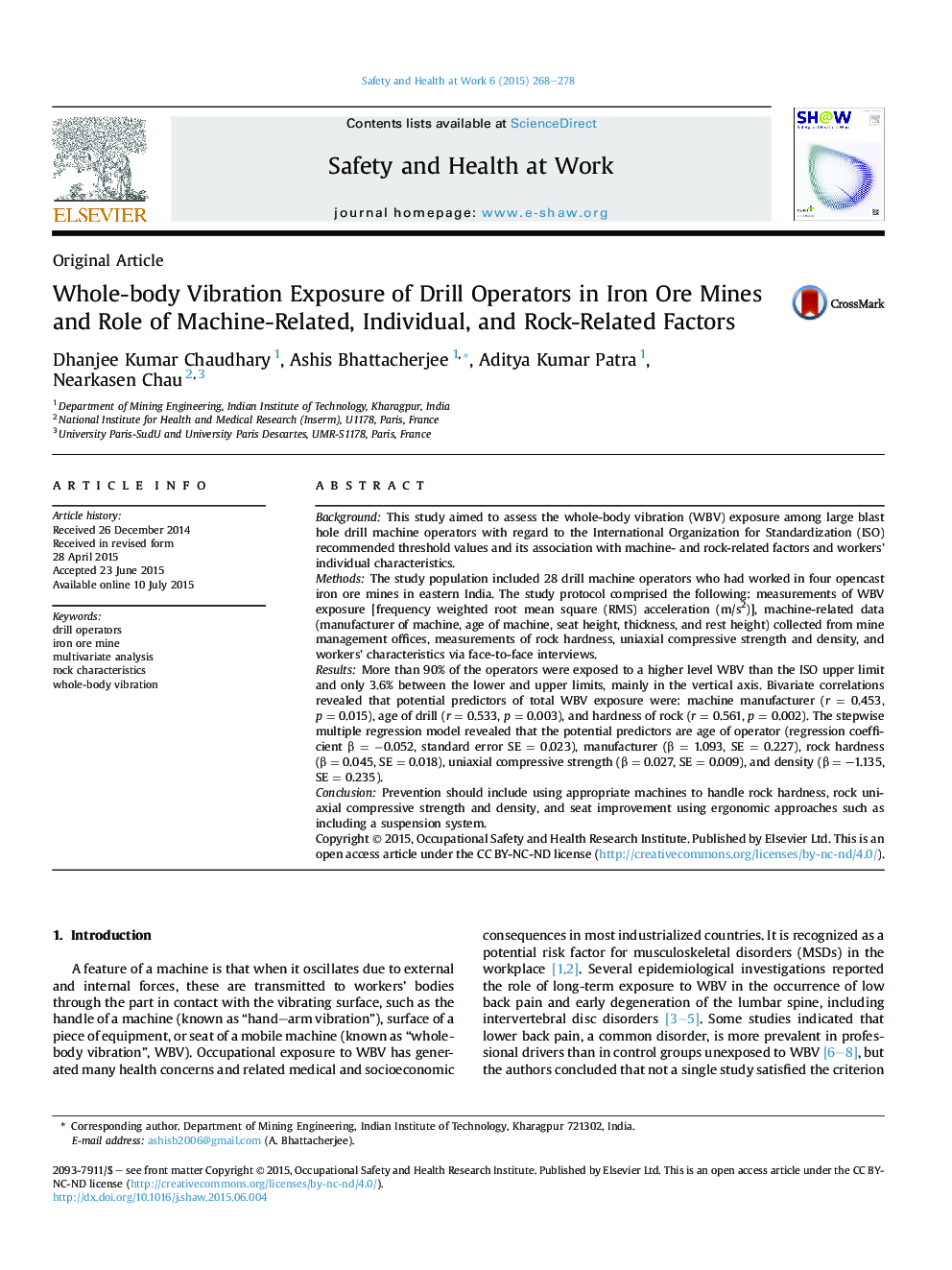| Article ID | Journal | Published Year | Pages | File Type |
|---|---|---|---|---|
| 1092098 | Safety and Health at Work | 2015 | 11 Pages |
BackgroundThis study aimed to assess the whole-body vibration (WBV) exposure among large blast hole drill machine operators with regard to the International Organization for Standardization (ISO) recommended threshold values and its association with machine- and rock-related factors and workers' individual characteristics.MethodsThe study population included 28 drill machine operators who had worked in four opencast iron ore mines in eastern India. The study protocol comprised the following: measurements of WBV exposure [frequency weighted root mean square (RMS) acceleration (m/s2)], machine-related data (manufacturer of machine, age of machine, seat height, thickness, and rest height) collected from mine management offices, measurements of rock hardness, uniaxial compressive strength and density, and workers' characteristics via face-to-face interviews.ResultsMore than 90% of the operators were exposed to a higher level WBV than the ISO upper limit and only 3.6% between the lower and upper limits, mainly in the vertical axis. Bivariate correlations revealed that potential predictors of total WBV exposure were: machine manufacturer (r = 0.453, p = 0.015), age of drill (r = 0.533, p = 0.003), and hardness of rock (r = 0.561, p = 0.002). The stepwise multiple regression model revealed that the potential predictors are age of operator (regression coefficient β = −0.052, standard error SE = 0.023), manufacturer (β = 1.093, SE = 0.227), rock hardness (β = 0.045, SE = 0.018), uniaxial compressive strength (β = 0.027, SE = 0.009), and density (β = –1.135, SE = 0.235).ConclusionPrevention should include using appropriate machines to handle rock hardness, rock uniaxial compressive strength and density, and seat improvement using ergonomic approaches such as including a suspension system.
